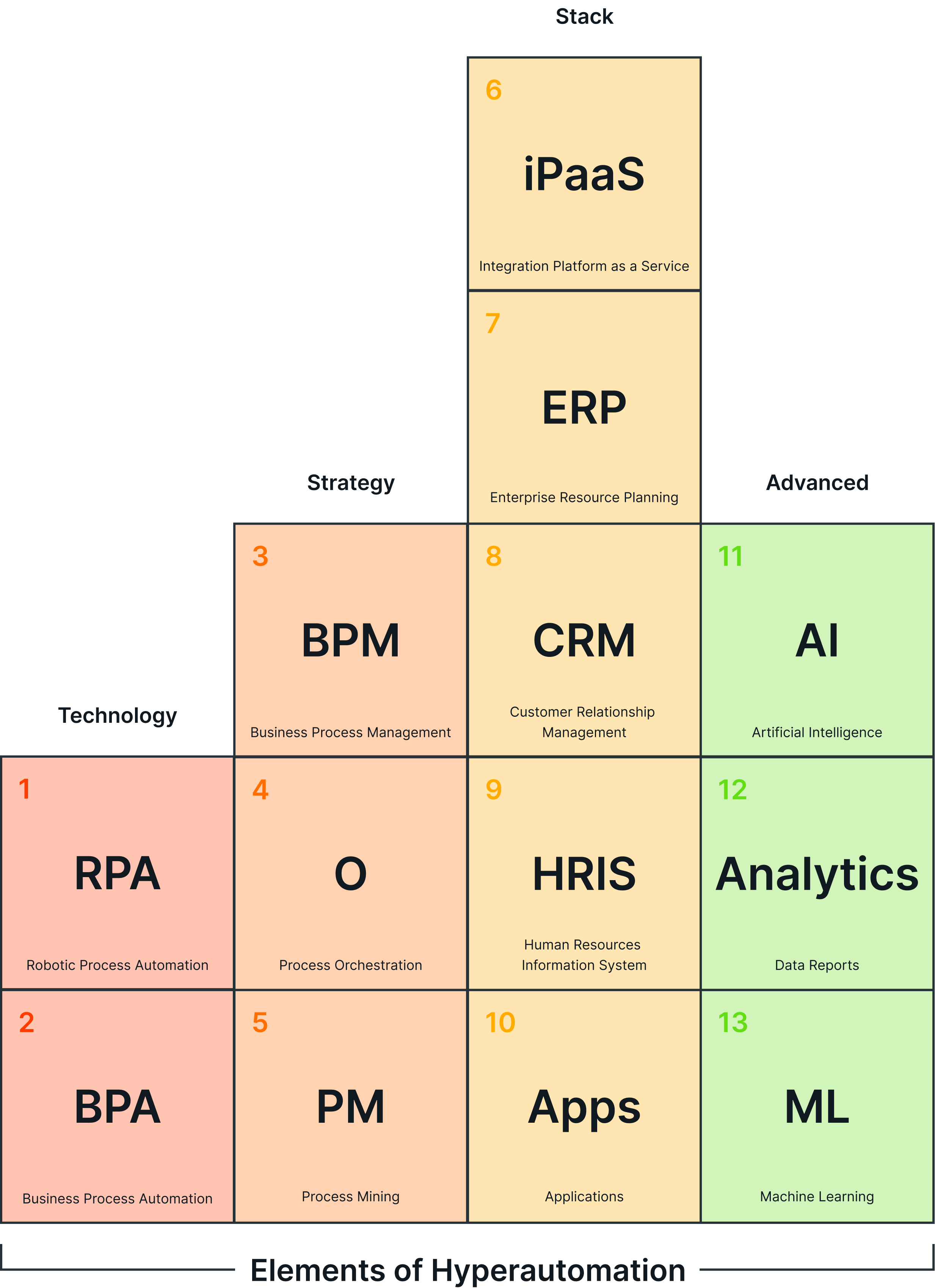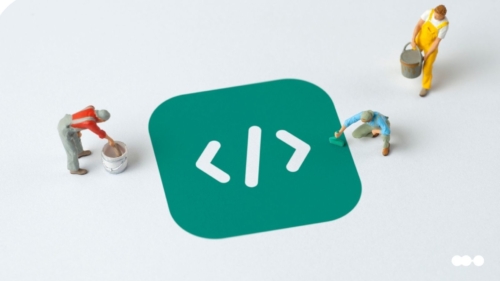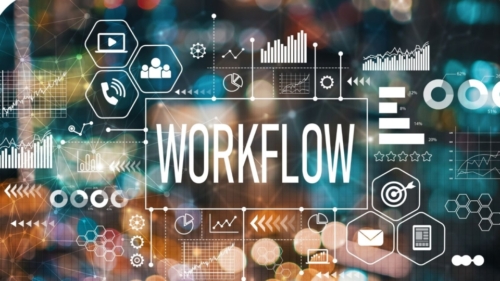
What is hyperautomation?
Hyperautomation is the combination of automation technology with artificial intelligence to discover all the processes and tasks within an organization, and then automate them. Hyperautomation looks for automation opportunities at the task, workflow, and process levels.

Hyperautomation is about automating at scale in order to accelerate digital transformation. Successful hyperautomation strategies integrate new technologies and apps into the existing tech stack in order to extend its capabilities and expand automation possibilities.
Find the right automation tool for your business with the Buyer’s Guide to Automation Platforms
How hyperautomation works
Hyperautomation combines a variety of technologies and tools to achieve automation throughout the enterprise. These include RPA, BPA, AI, machine learning, natural language processes, optical character recognition, and process mining.
Robotic process automation (RPA)
RPA is the cornerstone of hyperautomation, and it refers to the completion of a structured task by software or a bot. These bots follow a script that allows them to mimic human activity, such as logging into a system, retrieving data, logging out, and then entering that data into a different database.
Each bot is the equivalent of a single software license, which means that a single bot can typically only complete one type of task. If there are multiple tasks in need of automation, multiple bots will be required. A common scenario is to deploy multiple bots to complete a series of tasks that make up a workflow or process.
One limitation of RPA is that this technology is used to automate tasks as they are. In other words, RPA does not change or optimize the processes it automates. It simply completes the task in the same way, but without requiring human effort.
RPA technology also lacks its own orchestration layer, which means that businesses need a tool to coordinate activity among multiple bots. This is where BPA comes in.
Business process automation (BPA)
BPA is another primary component of hyperautomation. Unlike RPA bots that are coded to perform a single task, BPA software is designed to give business users a flexible tool that can be easily adapted to automate a wide range of tasks, workflows, and processes. Business users do not need programming or coding expertise to use BPA software.
In addition to automating at the task, workflow, and process levels, BPA software includes other features that support hyperautomation initiatives and overall process management strategy. These include:
- Process modeling tools for visualizing as-is processes and planning to-be processes.
- Process orchestration to coordinate the interaction between processes and workflows across team and department boundaries.
- Collaboration features that allow any user with permission to view, comment, or take action on an item in the workflow.
- Task management tools and views that provide visibility and control over their tasks. Business users can create task automations using a visual interface.
- Workflow management so tasks and activities can be organized into workflows that have a specific starting point and outcome. Workflows can be automated and tracked within the BPA platform.
- Document creation and routing so documents (such as SLAs or invoices) are automatically generated and delivered to the relevant party. Once an electronic signature is captured, the document is routed through the workflow to the appropriate reviewer or database.
- Reporting and analytics capabilities so processes, workflows, and tasks can be monitored for performance and analyzed for optimization opportunities.
- Integrations to connect BPA software to components of the existing tech stack, including ERPs, CRMs, HRIS, and any supporting apps. BPA helps teams maximize existing stack extensibility.
- Low-code automation that empowers business users to create automations and build processes without any coding experience. (More on that below.)
RPA and BPA play distinct — but complementary — roles in hyperautomation strategy. Learn more about the differences between RPA vs. BPA.
Artificial intelligence (AI)
If RPA is the basic building block of hyperautomation, then artificial intelligence is the defining characteristic that distinguishes hyperautomation from other types of automation.
AI supports hyperautomation by collecting and analyzing complex data in order to improve processes and identify new automation opportunities. In other words, AI helps create an overall automation strategy and develops smarter RPA bots that can handle a wider range of tasks.
Machine learning (ML)
Machine learning (ML) is a type of artificial intelligence in which a program analyzes large amounts of data in order to make predictions and/or decisions. Machine learning supports hyperautomation by helping businesses understand and leverage the vast troves of data related to their processes and automations. Machine learning informs strategic decision making.
Natural language processes (NLP)
Natural language processing is the technology that allows computers and apps to receive, analyze, and respond to verbal communication. NLP supports hyperautomation by expanding the range of information that a bot can receive and process.
Optical character recognition (OCR)
Similar to NLP, the role of OCR in hyperautomation is to allow automation tools (such as RPA and BPA) to ingest and use more complex information. OCR allows bots to scan, capture, and process information from physical documents, scanned copies of documents, or images. This eliminates the need for a person to examine the document and then perform a data entry task.
Process mining
Process mining is the science of identifying both new and existing (but unrecognized) processes within an organization. Because hyperautomation combines sophisticated technologies in order to better understand the tasks, workflows, and processes that take place in an organization, it produces data that can be leveraged for process mining.
Hyperautomation: related technologies
In addition to the elements of hyperautomation listed above, there are two other technologies that are often closely entwined with hyperautomation initiatives: low-code and BPM.
Low-code automation
The purpose of low-code technology is to give business users a code-free toolbox for solving problems and developing applications. Sometimes referred to as “no-code” solutions, these platforms allow teams to model, build, and automate workflows and processes using a visual, drag-and-drop interface.
Low-code automation complements hyperautomation by giving business teams the opportunity to quickly build, optimize, and automate their workflows and processes. Low-code functionality increases business team agility while easing the burden on the IT backlog. Like hyperautomation, low-code automation increases the scope and pace of automation efforts.
See how no-code automation accelerates digital transformation. No-code Automation: Good for Business, Great for IT
Business process management (BPM)
Business process management is more accurately described as a strategy rather than a technology, although many software platforms describe themselves as BPM solutions.
BPM refers to the discipline of planning, building, optimizing, and monitoring processes across the enterprise. The driving force behind BPM is the need to continually add efficiency and visibility to existing processes and orchestrate the relationships between them.
While BPM isn’t usually considered a technology component of hyperautomation, BPM and hyperautomation share many of the same goals. As a result, it may be more accurate to say that hyperautomation is one strategy within a larger BPM framework.
Benefits of hyperautomation
Businesses pursue hyperautomation for many reasons, but first and foremost is that hyperautomation can play key roles in both digital transformation and developing a more agile business. Hyperautomation is about automating at scale, which can exponentially increase efficiency across the enterprise.
More specifically, hyperautomation:
- Reduces the cost of manual labor.
- Increases process speed and accuracy.
- Expands the scope of automation by making it possible to automate more complex tasks and workflows.
- Accelerates the pace of automation by using technology and data to identify new automation opportunities.
- Enables more meaningful, data-driven decisions.
- Democratizes automation efforts by giving business teams tools to automate some processes on their own.
- Reallocates resources so that team members can focus on higher priority tasks such as strategy, security, and customer relationship management.
Next steps toward hyperautomation
There are many factors to consider when trying to decide if your business is ready for hyperautomation. The first is the complexity of the business process architecture. Are there many different processes and workflows in play? Does the automation strategy target all departments or is it focused on automation opportunities for a specific team?
Whether or not hyperautomation is on the immediate horizon for your organization, a low-code BPA tool may be the next right step. Low-code BPA expands the range of tasks, workflows, and processes that can be automated, and it democratizes automation by giving business teams a set of tools they can use without coding experience.
Low-code BPA integrates with the components of the existing tech stack to dissolve data and collaboration silos and extend the capabilities of current systems and apps. And since BPA is compatible with both low-code BPM and hyperautomation, adopting low-code BPA first can set the stage for more complex automation initiatives later on.






